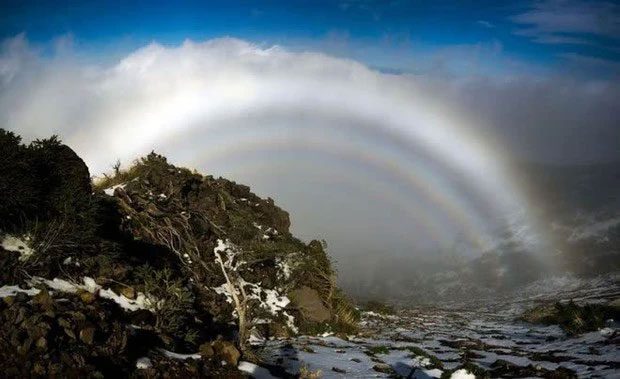Have you ever wondered what is at the top of the Egyptian pyramids or what the rarest natural phenomenon in the world is?
Our world is constantly changing every day, and the secrets it holds always leave us in awe. Even in today’s highly advanced technological era, humans have the means to explore many fascinating aspects of life, yet there are still many things about the world that not everyone knows.
Let’s take a look at the interesting facts below and see how much you already know.
1. The Apex of One of the Egyptian Pyramids

Benben Stone
This is the Benben stone discovered in the Phoenix temple in Egypt. The ancient Egyptians regarded the phoenix as a symbol of cyclical seasons and believed it had the power of creation and resurrection. According to scientists, the Benben stone was placed at the pyramid of Amenemhat III. The inscriptions on the stone are prayers asking the pharaoh to “reflect on life.”
2. The “Square Wave” Phenomenon

This phenomenon occurs when two wave systems on the ocean move diagonally to each other.
The “square wave” or “cross sea” phenomenon is known as one of the rarest natural phenomena in the world. It occurs when two wave systems on the ocean move diagonally to each other. Viewed from above, it creates a fascinating square pattern in the ocean, but it is also extremely dangerous for individuals or vessels entering this area.
3. The Beard of Pharaoh Tutankhamun Fell Off During Cleanup

The Mask of Pharaoh Tutankhamun
The tomb of Pharaoh Tutankhamun in Egypt is one of the most famous tombs in history. Among its treasures, the mask of Pharaoh Tutankhamun is a rare artifact discovered in 1922 and is displayed at the Egyptian Museum.
However, few know that museum staff accidentally dropped the beard of the mask during a cleanup in 2014. They even attempted to reattach it using epoxy glue and sharp metal tools to hide their mistake, which ultimately caused more damage to the artifact.
4. The Colorless Rainbow Phenomenon

This phenomenon is very rare.
Fogbow or white rainbow is a phenomenon that rarely occurs. It can only be seen when very small droplets of water with a radius of up to 0.05 mm are present in the atmosphere, and if you stand with your back to the sun looking towards the fog. Interestingly, it can even appear at night when the moon is shining in the sky, and it is then referred to as a moonbow.
5. Penguin Droppings Can Change the Ecosystem in Antarctica

Penguins primarily inhabit Antarctica
As a species that primarily lives in Antarctica, penguins are believed to have a significant impact on the ecosystem in this area. They have produced over 16 million pounds of rich nutrients for Antarctic vegetation over the past 5,000 years.
6. Our Brain Cannot Create a Strange Face in Dreams

Everyone who appears in your dreams is someone you have met.
Our brains are capable of many amazing things, but “inventing” entirely new faces in our dreams is not one of them. Neuroscientists believe that everyone who appears in your dreams is someone you have encountered before in some way—perhaps a friend, an acquaintance, or just a stranger you happened to see on the street for a moment.
7. The Sahara Desert Was Once a Forest

6,000 years ago, the Sahara Desert was covered by lush grasslands.
As one of the largest deserts on Earth, covering an area of up to 9,000,000 km², the Sahara was once a dense forest filled with greenery. According to scientists, 6,000 years ago, the Sahara Desert was covered by lush grasslands, but climate change has transformed this landscape into the arid desert we see today.


















































